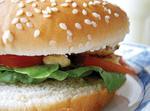No turning back on our fast food habits
 Health Sciences Health Sciences
Is fast food intake so entrenched in Australians' eating habits that more should be done to promote healthier fast food options, instead of trying to prevent people from eating fast food altogether? That is one of the questions being raised in a new study by a University of Adelaide PhD student, who has been researching the social behaviour behind fast food consumption in South Australia. Emily Brindal is a University of Adelaide PhD student based at CSIRO Human Nutrition, and is part of the NOBLE (Nutrition Obesity Lifestyle and Environment Studies) research group. Ms Brindal studied 528 South Australians to gain a better understanding of the kinds of fast foods being consumed, how often, and under what circumstances. "Fast food items are generally known to be high in fat, and previous studies have shown that fast food consumers tend to be heavier," Ms Brindal said. "At the same time, ABS (Australian Bureau of Statistics) figures show that eating out has increased in the last 20 years, and fast foods account for a high proportion of these meals. "Therefore, unravelling fast food consumption as part of everyday living is going to be important in better understanding how we can attack weight gain and obesity in the community," she said. Ms Brindal found that, on average, the people surveyed visited one of the major fast food chains 3.4 times a month. They consumed almost 3700 kilojoules (885 calories) per visit (or 40% of the daily kJ intake), and most ate fast food with at least one other person, usually their partner. Almost 70% bought their fast food using a drive-thru or got takeaway. The most common activity before buying fast food (27.8% of cases) was simply being on the way somewhere, such as heading home from work or driving to the city. In 16.9% of cases, fast food was bought while the consumer was out shopping or buying groceries. The most common reason given for buying fast food (in 33.7% of cases) was general convenience - "I was in a hurry" or "I didn't have time to cook" were the most frequent responses. Other reasons included a specific attraction to the type of food, with responses such as "I feel like KFC" and "I needed a treat", as well as incidental convenience - "I was driving past". The most visited chains, in order, were McDonald's, followed by Hungry Jack's, KFC, Domino's and Red Rooster. However, the energy intake reflected a different picture, with the kJs consumed being the highest at Hungry Jack's followed by KFC, Red Rooster, McDonald's and Domino's. "It is clear that despite repeated messages about fatty foods and the risks associated with obesity, people will continue to eat fast foods," Ms Brindal said. "Promoting 'healthy' fast food consumption might be the best option to adopt. This could be targeted at fast food consumers who have the most frequent weight-gain behaviour. "The results so far paint an interesting picture of fast food consumption, but they also show us that there is still a lot to understand." Ms Brindal presented some of her findings at a recent conference, "The Shape Of Things To Come", organised as part of the NOBLE research project. www.fastfoodstudy.com.au Story by David Ellis
|




